Unpacking the Great Resignation
What Clearbit data tells us about pandemic-era labor market trends

6 minutes
Intro
In 2021, over 47 million Americans said, "I quit" to their employers.
Dubbed "The Great Resignation," a record-breaking trend of people voluntarily leaving their jobs emerged from the initial year of the COVID-19 pandemic. The quit rates peaked in November 2021, with 4.5 million people handing in their resignations.
And the quits keep coming.
According to the U.S. Bureau of Labor Statistics, over 4 million people left their jobs every month since July 2021. A 2022 survey by Willis Towers Watson suggests that broad swaths of employees are still looking to make moves — with 53% of their respondents indicating they were open to leaving and 44% actively looking for a new job.
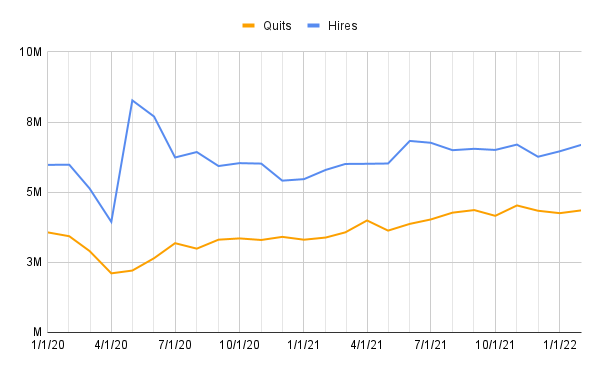 Source: U.S. Bureau of Labor Statistics
Source: U.S. Bureau of Labor StatisticsFor nearly a year now, the Great Resignation has been in the headlines, with hiring remaining higher than quit rates. It's an intriguing time of turnover in the job market. During a recent Clearbit Hack Week, three of our engineers — Emily Brown, Iva Ivanova, and Kayla Webb — dug into the Clearbit data to see what we could learn about this shift in the labor force.
 Kayla Webb (Software Engineer), Emily Brown (Engineering Manager), Iva Ivanova (Senior Data Scientist)
Kayla Webb (Software Engineer), Emily Brown (Engineering Manager), Iva Ivanova (Senior Data Scientist)About our report data
We pulled employment data from Clearbit's B2B database of 44+ million companies and 350+ million contacts. (Clearbit is a data activation platform for B2B marketing and revenue teams, providing real-time intelligence like firmographic, technographic, and website intent signals to focus the funnel.)
Since we serve B2B companies that primarily sell and operate online, our data set has more coverage of employees at such businesses. Accordingly, our findings won't reflect the trends of workers who were greatly affected by the pandemic, such as those in the service, hospitality, leisure, and retail industries.
For this report, we looked only at U.S. employees with employment changes detected within 2021. The dataset sample sizes represented in the findings and charts below ranged from approximately 1 million to 1.5 million people, based on the availability of the data for analysis.
Two possible signals indicated that someone left their job: their inactive_at or employment end date was equal to or between January 1, 2021 and December 31. 2021. (inactive_at is a Clearbit field providing the time we detect that someone is no longer in a certain job, powered by two key data points: whether their work email address is active or employment data has changed.) Given the nature of our dataset, we also can't know for certain that all these departures were voluntary — which is why we focused only on 2021 (after the COVID-related RIFs and layoffs of 2020).
To avoid counting duplicate profiles, we used LinkedIn handle as the unique identifier, rather than email address. We also limited the data set to the top two employment entries per person (present and former position).
We pulled and analyzed this data in February 2022.
Now, onto the findings!
Industry shifts
During this time of turnover and reconsideration, we thought it was possible that people might be shaking up more than their job and leaving their field altogether.
We saw that roughly 20% of employees bid farewell to one industry and said hello to a new job in a different industry.
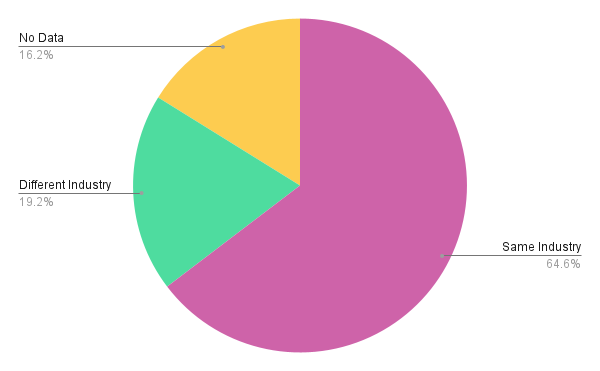
Then we zoomed in on where those shifts were happening.
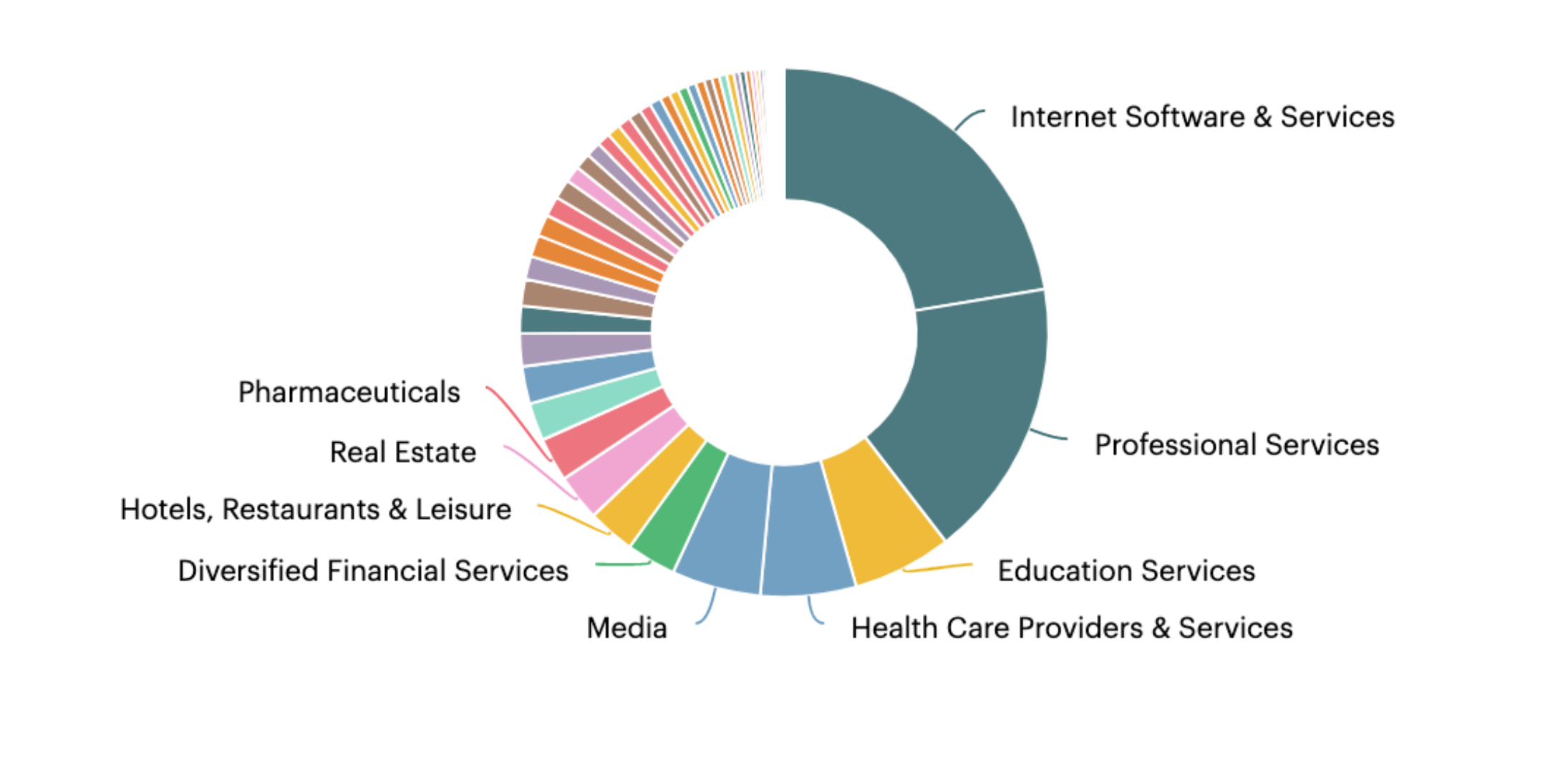
Accounting for over 50% of the total moves, the top five fields people left for a new one include:
- Internet Software & Services
- Professional Services
- Education Services
- Healthcare providers and services
- Media
And where did all these movers and shakers go?
Though it was one of the top fields that people left, Internet Software and Services was also the most common industry people switched over to.
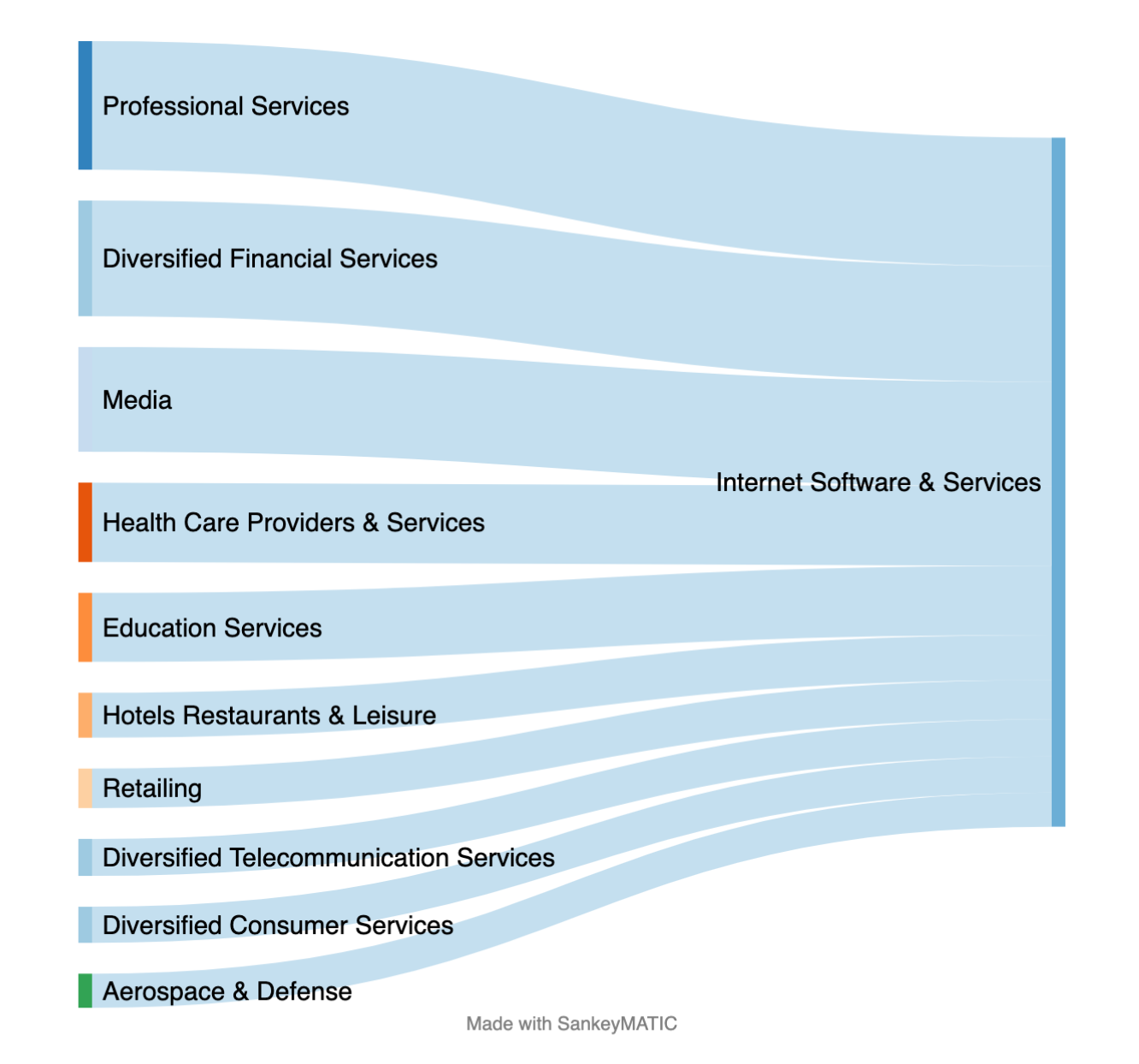
These were top industries feeding into tech:
- Professional Services
- Diversified Financial Services
- Media
- Health Care Providers & Services
- Education Services.
States with most resignations
Where were people resigning the most?
Utah tops our list of states with the most resignations per capita — around 6% — followed by California, Colorado, and New York. While we didn't dig into industries within states for this report, there is an interesting correlation of these top states with the top states for tech.
Resignations by company size
The Great Resignation is impacting companies of all sizes across the board — especially small and midsize businesses, with 11-1000 employees.
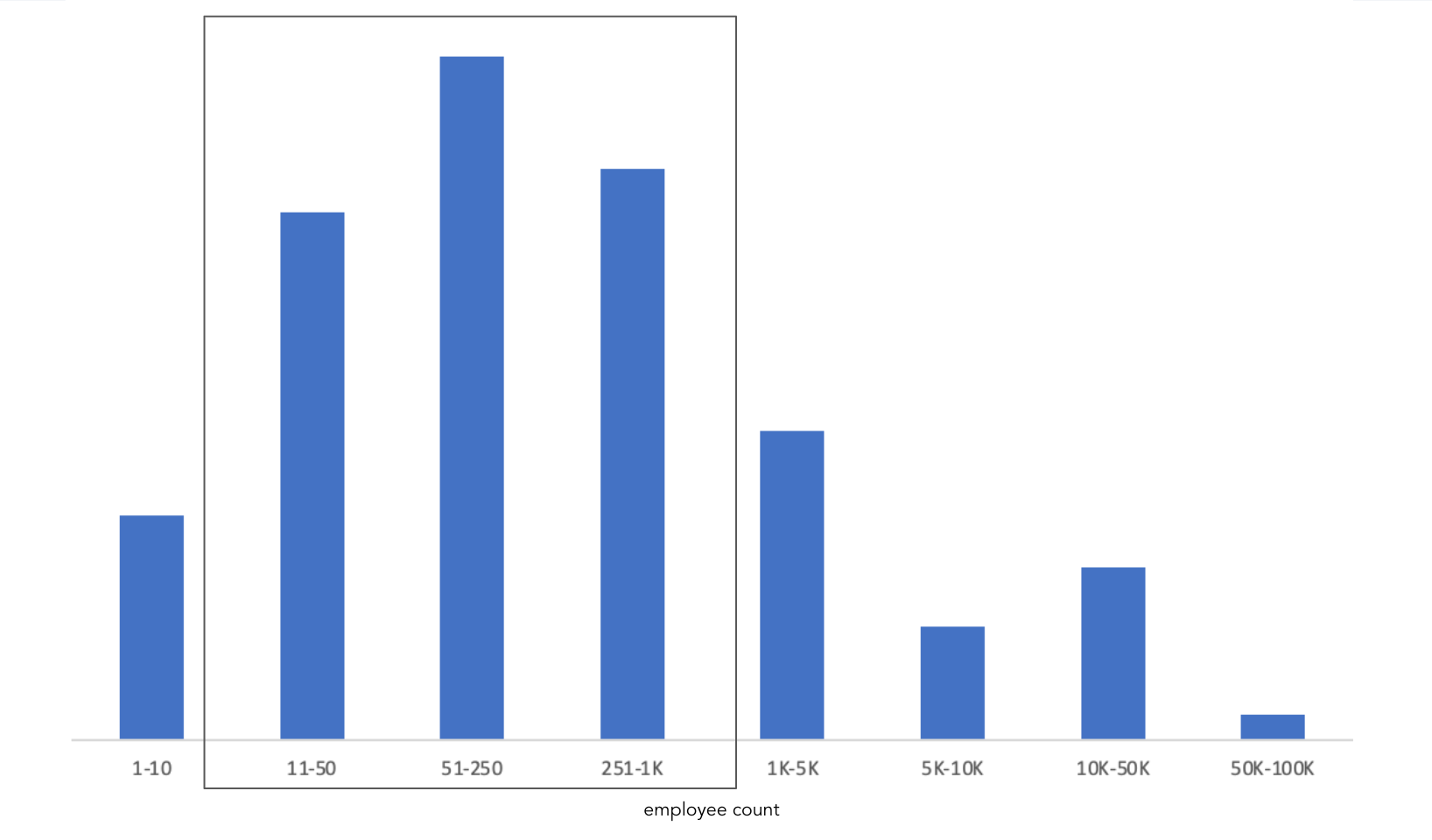
Resignations by seniority
Ten percent of directors left their jobs — followed by executives close behind, and then managers.
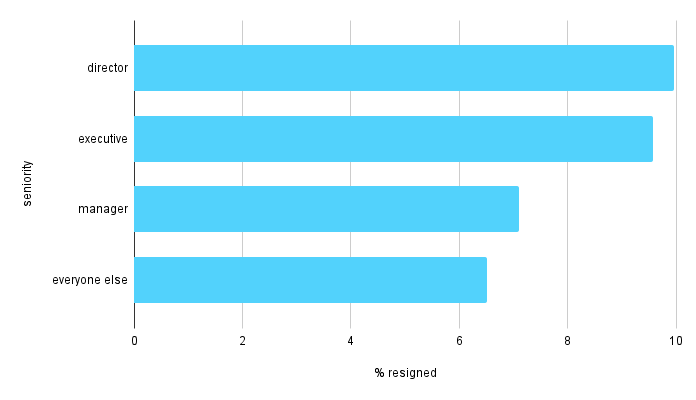
This appears to support existing research on the Great Resignation, including a survey of 1,000 HR leaders and hiring managers by Fiverr Business and HiBob that found that higher-level employees and 36-45 year olds were leaving at higher rates.
Research by Visier also shows that mid-level workers at enterprise organizations are quitting at significant rates than expected, especially considering that these segments tend to have employment that is "typically more stable and slow to change," indicating "the disruptive nature" of the Great Resignation.
Resignations without re-entry
Lastly, we found that 4% of employees who left their jobs in 2021 didn't return to the workforce.
While we don't have the data to determine reasons for not returning, we believe that COVID-related consequences like lack of schools and daycare requiring full-time childcare — which disproportionately impact women — played a key role. A recent survey of over 9,000 people by Pew Research Center found that nearly half of workers cited "child care issues" as the reason they left their job in 2021. And research from the payroll and HR company Gusto found that childcare issues correlated directly to states where the gender gap in quit rates was widest.
The Great Resignation participants are looking for better opportunities and more flexibility.
And the majority of employees who now work remotely — another pandemic-driven shift — are finding it easier to manage their work/life balance without affecting the ability to advance in their job. A whopping 78% of them would like to continue to work remotely in the long run.
The COVID-19 pandemic fundamentally transformed how we think about and want to work — and we're curious to see how the landscape continues to shift into the rest of 2022.
As a 100% remote company (and roots as a distributed team), we recognize the value of flexibility and autonomy in shaping the workdays we want at Clearbit — and we're hiring!
